Dates 14 Sep 1864 – 17 Sep 1864 | ||
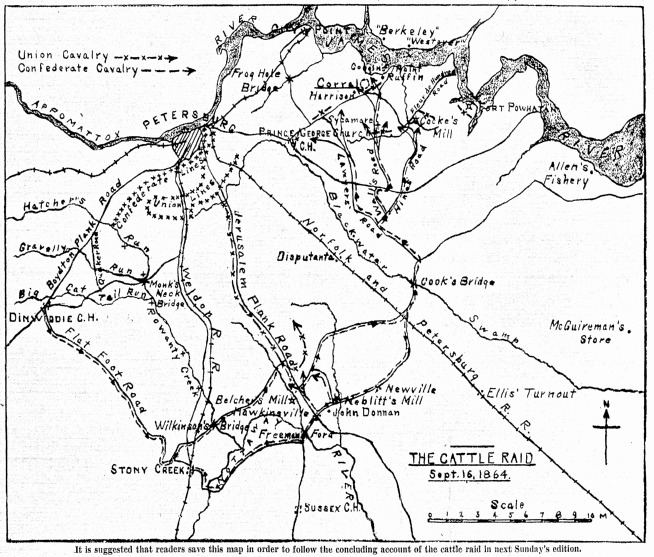 | ||
304 captured2,685 cattle captured 10 killed47 wounded4 missing Combatants Confederate States of America, United States of America, Union Similar American Civil War, Battle of Sappony Church, Wilson–Kautz Raid, Battle of Darbytown and New, Battle of Darbytown Road | ||
The Beefsteak Raid was a Confederate cavalry raid that took place in September 1864 as part of the Siege of Petersburg during the American Civil War. Confederate Maj. Gen. Wade Hampton led a force of 3,000 troopers on what was to become a 100-mile (160 km) ride to acquire cattle that were intended for the consumption of the Union Army (which was laying siege to Richmond and Petersburg, Virginia).
Contents
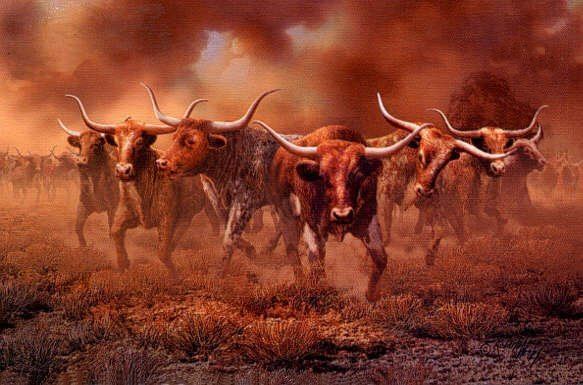
Background
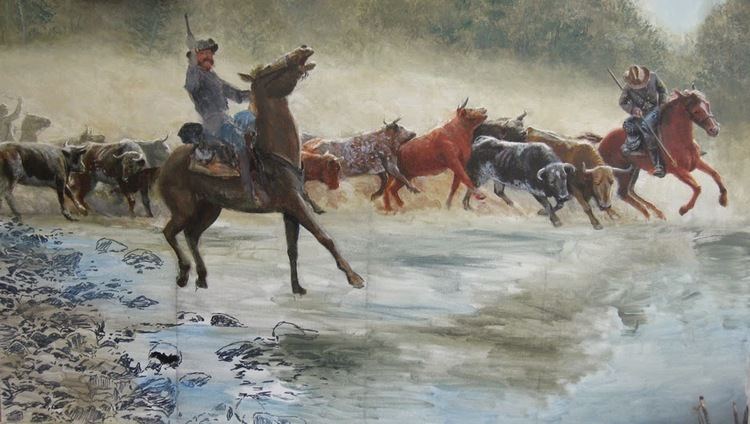
Always lacking in supplies, the Confederate forces that were defending the capital of Richmond were beginning to run out of food. A report by General Robert E. Lee on August 22, 1864, stated that corn to feed the Southern soldiers was exhausted. A scout, Sergeant George D. Shadburne, informed General Hampton on September 5, 1864, that there were 3,000 cattle behind Union lines, at Edmund Ruffin's plantation on Coggin's Point, five miles (8 km) away from Lt. Gen. Ulysses S. Grant's headquarters, which were lightly defended by only 120 Union soldiers and thirty civilians. Sensing an opportunity to increase the army's food stores, Hampton arranged for 3,000 troops to follow him. These men included "several certified Texas cattle thieves".
Raid
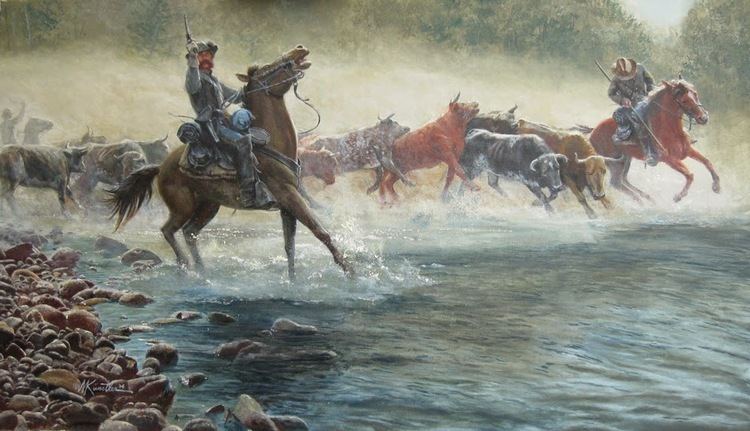
Hampton led his men to the south of the cities, behind Union lines, on September 14. He chose to cross where the Cook's Bridge over the Blackwater River once stood, knowing that an attack from there would be unexpected. He had some engineers reconstruct the bridge. At 5 a.m. on September 16, Hampton's force attacked with a three-prong strike, with the center directed toward the cattle. Hampton's force captured more than 2,000 cattle, along with 11 wagons and 304 prisoners, leading them back to the Confederate lines at 9 a.m. on September 17.
Aftermath
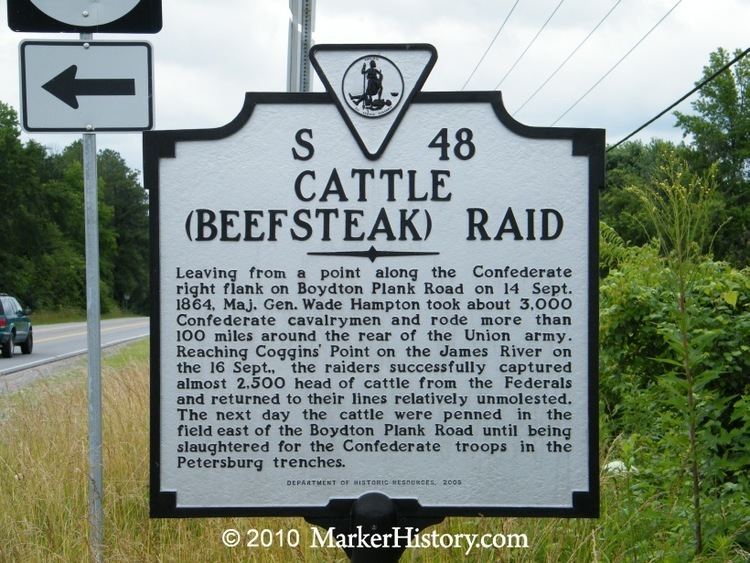
The total losses for the Confederates, who saw some opposition, were 10 killed, 47 wounded, and 4 missing. The official count of cattle successfully reaching the Confederates for food was 2,468.
Despite the raid's success, its strategic impact was not as great as the large number of cattle taken might seem to indicate. For whereas the Union had the resources to replace its lost cattle, the Confederates lacked grain to spare for feed. They were therefore forced to slaughter the cattle almost as soon as they had secured them. The ensuing "feast" on the Confederate side might be better described as a rush to consume the beef before it spoiled.
For days afterwards, the southerners would taunt the northern sentries, thanking them for all the food and inviting them over for dinner. There was so much beef available that Confederate sentries would sometimes offer it in unauthorized trades with Union sentries for certain luxury items of which the Federal soldiers had a plentiful supply, but the Confederates lacked. After the beef was eaten or spoiled, the Confederates reverted to their previous, dire food situation.
Abraham Lincoln called the raid "the slickest piece of cattle-stealing" he ever heard of. General Lee's adjutant Walter H. Taylor said it made up for the loss of the Weldon Railroad, a claim most historians consider to be overstated.
A fictionalized depiction of the raid is featured in the 1966 film Alvarez Kelly.
The Prince George County Historical Society holds an annual steak dinner on the anniversary of the Beefsteak raid to commemorate the event.
